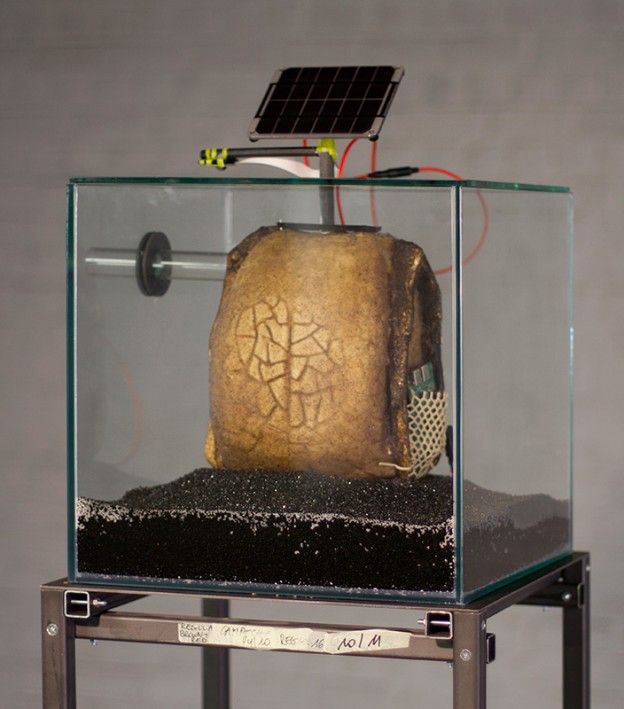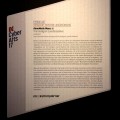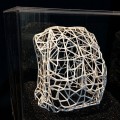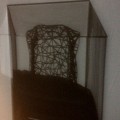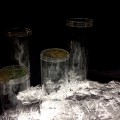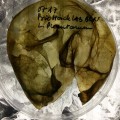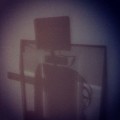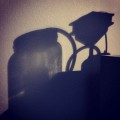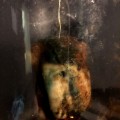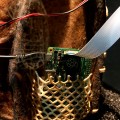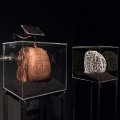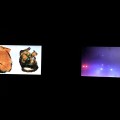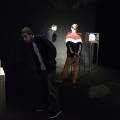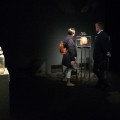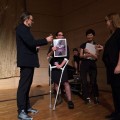The CyberArts exhibition at the OK Center for Contemporary Art (Sept.7-Sept17, 2017) features the best works singled out for recognition by the 2017 Prix Ars Electronica. The world’s most coveted prize honoring creativity and pioneering spirit in media art has been awarded annually since 1987. Thousands of artists all over the world submit their works for prize consideration; a jury of experts from throughout the world evaluates the entries and selects the best. Once again this year, the CyberArts exhibition will spotlight an array of outstanding works of media art from all over the world.
Belgian artist AnneMarie Maes presents her project ‘Sensorial Skin for an Intelligent Guerilla Beehive’.
The Intelligent Guerilla Beehive is a shelter for swarming bee colonies, prototyped out of organic materials and powered by green energy. It is a bio-technological sensing device to measure the health of the environment as well as to monitor the wellbeing of bee colony living inside. Bacteria -living in a biofilm on the outer skin of the beehive- send out warnings by adapting their colour to different degrees of environmental contamination. Bacteria living on the inner side of the beehive’s skin support the bees in their struggle against the Varroa mite.
about the project
‘The Intelligent Guerilla Beehive is a speculative research project that combines in a radical way smart materials, biomimetic forms and biotechnology. It is inspired by the intelligence, complexity and self-organisation of bee colonies as Super Organisms.
‘Sensorial Skin for an Intelligent Guerilla Beehive’ is a bio-art installation on the edge of art and science. It evokes issues of sustainability and biodiversity, giving viewers an artistic experience of my ongoing research related to the disappearance of the honeybee.
Bees are bio-indicators. They reflect the health of their surrounding ecosystem as well as the cumulative effects of different pollutants. But in many industrialized nations bee colonies are now threatened. Pesticides and parasites are among the main factors, but equally worrisome is air pollution and the compromised state of the bees’ foraging fields. To tacle the unfairness against honeybees, I developped a radically new beehive: The Intelligent Guerilla Beehive. This mobile shelter for swarming honeybees is designed for urban environments. It supports the bee colonies in their pollination tasks, and as result indemnifies the biodiversity of their foraging fields.
The research and development of the device have also been a starting point for exploring possible futures through artistic experiments on materials science and biotechnology. The Sensorial Skin – the outer membrane of the Intelligent Guerilla Beehive – is a smart fabric grown by Acetobacter bacteria and yeast cells. It is augmented with a mix of organic and electronic elements for sensing and actuating, for computation and for communication. Lactobacillus plantarum bacteria living in a biofilm on the upper cellulose skin act as biosensors. When they sense a specific degree of pollution, they are changing colors and making patterns that reflect the environmental threats. The double-sided skin, wrapped at one side in a bacterial biofilm and at the other side covered by a pattern of porous stomata, is also giving room to beneficial micro-organisms to attack the bees’ natural enemy the Varroa destructor mite.
Most of the experiments were run in my ‘Laboratory for Form and Matter’ where I work with a range of biotic and abiotic elements. I view my lab as an open environment for experimentation, a space for contradiction, criticism and evaluation. I combine organic components such as vegetal matter, propolis and chitine, with living systems such as fungi and bacteria. My micro-organisms grow biofabrics and I research how these membranes can be enhanced and made useful through embedded electronics and how more sensorial qualities can be implemented in these membranes via living technology. Navigating between blueprint and ‘Proof of Concept’, the resulting prototype can be classified as ‘Future Archaeology’: a fragment of a Forgotten World as well as a fragment of a World To Come.’
bio
AnneMarie Maes is an artist and a researcher. Her art meanders on the edge of biology, ecology and technology. Her research practice combines art and science with a strong interest for DIY technologies. She works with a range of biological, digital and traditional media, including live organisms.
Her artistic research is materialized in techno-organic objects that are inspired by factual/fictional stories; in artifacts that are a combination of digital fabrication and craftsmanship; in installations that reflect both the problem and the (possible) solution, in multispecies collaborations, in polymorphic forms and models created by eco-data. In her Laboratory for Form and Matter she studies the processes by which Nature creates form: the creation of honeycombs, how bees self-organize into swarms, how plants grow and form geometric patterns, how bacteria and yeast cells collectively create material surfaces forming biofabrics. She observes and analyzes these processes, isolates them or causes them to appear in artificial conditions. She creates art works from this artistic research in many different media: installations and sculptures, video, audio, photographs and objects.
Anne Marie Maes is a founding artist and director of several non-profit art collectives as Looking Glass, So-on and Okno. She has for decades been a recognized leader pioneering art/science projects in Belgium, using highly original ways to bring out hidden structures in nature by constructing original technological methods to probe the living world and by translating that in artistic creations.
She has a strong international profile, having exhibited (amongst others) at Bozar in Brussels, Koç University Gallery in Istanbul, Borges Center in Buenos Aires, Arsenals Museum in Riga, Skolska Gallery in Prague, the Institute of Evolutionary Biology in Barcelona, the Designmuseum in Mons, the Wissenschaftskolleg in Berlin, Museum de Domeinen in Sittard, Grey Area Gallery in Korcula, the OK Center for Contemporary Art in Linz (Ars Electronica), the Science and Technology museum in Milano.
In 2017 she was awarded a Honorary Mention in the Hybrid Art category at Ars Electronica, for the Intelligent Guerilla Beehive project.

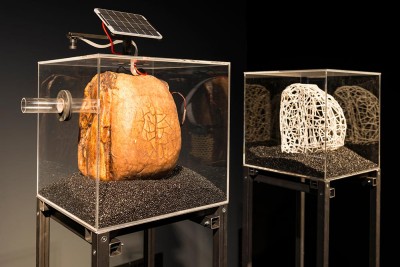
Intelligent Guerilla Beehive.
Installation shot@ OK Offenes Kulturhaus / Center for Contemporary Art, Linz/A
Photo: Otto Saxinger
